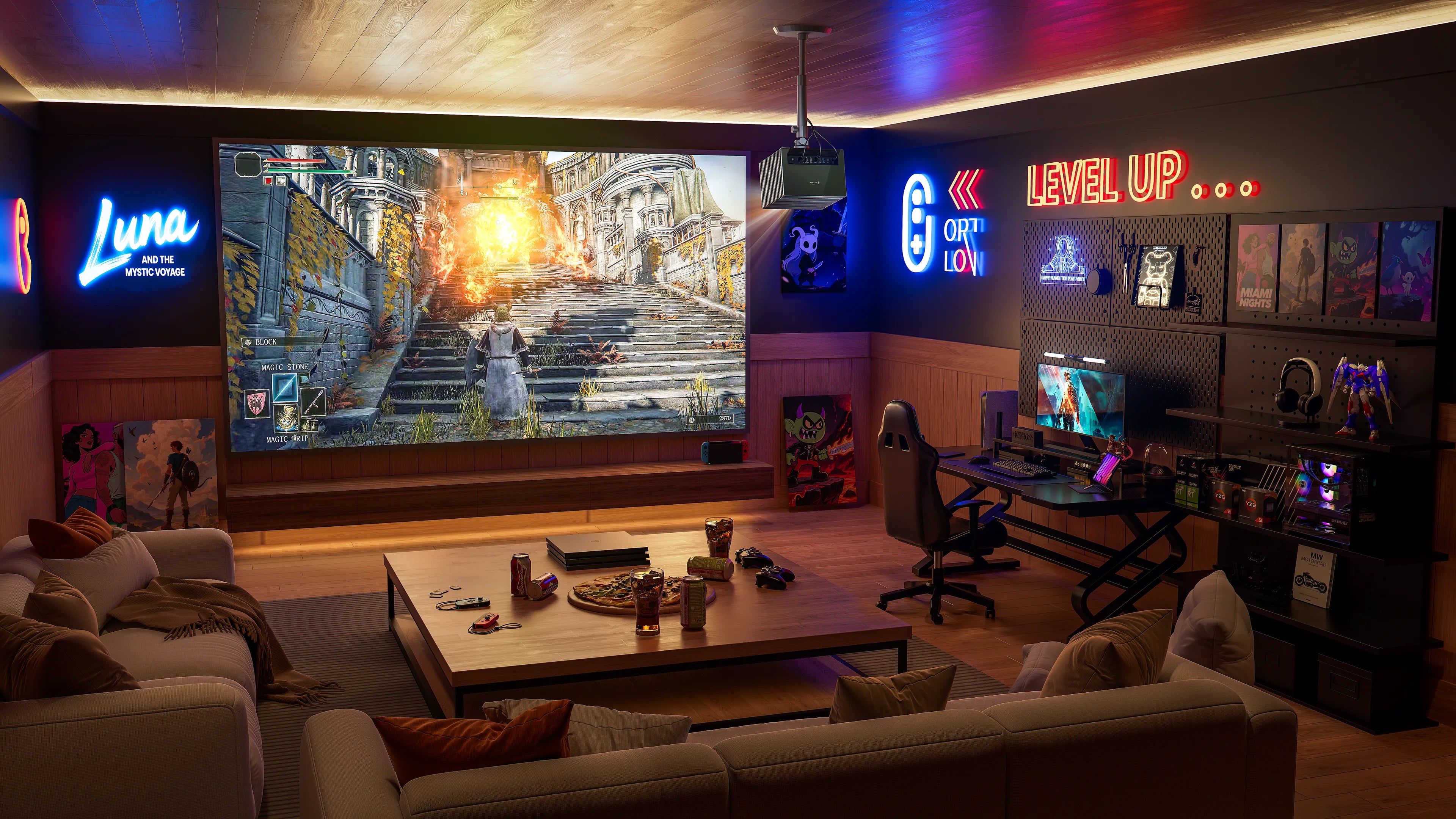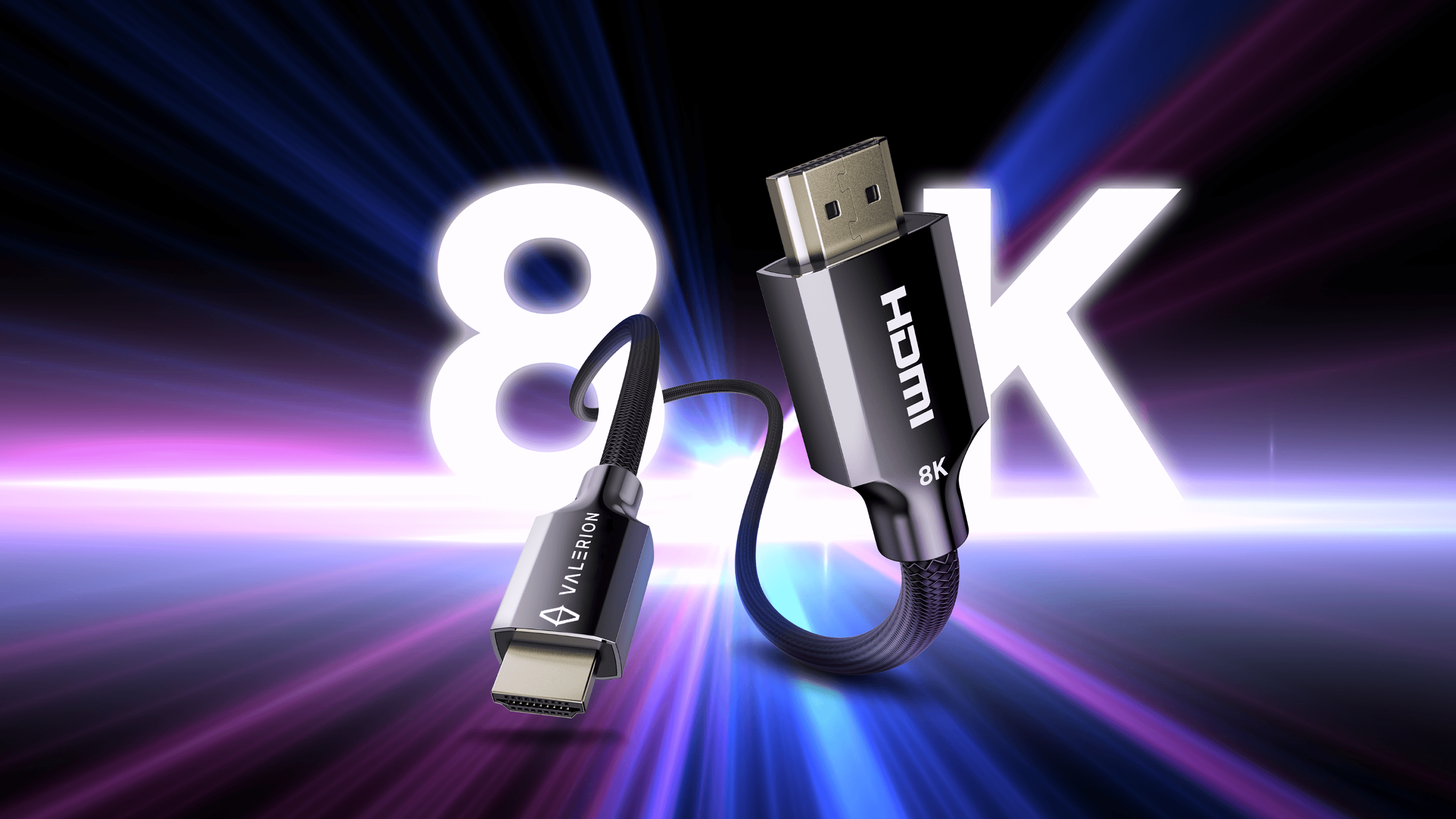A Short History of Projector’s Light Sources
Early projectors used carbon arc lamps, which created light by generating an electric arc between two carbon rods. These were replaced by high-pressure mercury and xenon lamps somewhere around 1950s. These newer DC high pressure lamps were brighter and more stable but still had many problems. They got very hot, lost brightness over time, and needed to be replaced often.
As projector technology improved, around 2005 LED light sources appeared, offering longer life but lower brightness than lamps. Then, around 2008 came the real game-changer: The laser light source. Laser projectors now dominate the market in home cinema, education, business, and even professional theaters. They offer many advantages, including:
- Stable brightness over time
- Lower power consumption
- Cooler operation
- Instant on/off (no warm-up or cool-down time)
- Better and more accurate colors
- Much longer life (20,000 hours or more)
- Less maintenance
Now let’s take a look at the three most common types of laser light engines used in modern projectors.
1. Pure RGB Laser Technology – The Premium Option
This advanced laser engine uses three separate laser diodes—Red, Green, and Blue. Each diode emits its own primary color light directly, without the need for any color conversion or filters. This is the core laser technology used in the latest DCP (Digital Cinema Projection) systems found in the world’s largest and most advanced commercial cinema theaters.
✅ Advantages:
- Maximum Color Performance
- Covers up to 120% of the BT.2020 color space.
- Ideal for HDR content, since it can display deeper reds, more vivid greens, and purer blues.
- Offers superior color-balanced performance compared to other technologies, even at high brightness levels.
- Excellent Brightness with Lower Power Consumption
- Very efficient light output, with high luminance per watt.
- Lower heat production compared to laser systems using color conversion (like phosphor wheels).
- Laser Dimming & Advanced Contrast
- Perfect for AI-based dynamic contrast algorithms.
- Laser diodes can dim instantly, allowing scene-by-scene or frame-by-frame ultra-fast and precise brightness control.
- Compact Optical Design
- Fewer components mean smaller and lighter projectors.
- Ideal for compact, high-performance home cinema and professional setups.
- Easy Calibration
- Since each color has its own dedicated source, color temperature and gamma settings are more precise and user-adjustable.
- Calibration remains stable over time, with minimal drift.
- Long Life & Durability
- Can last over 30,000 hours, with little drop in brightness or color accuracy.
- Fewer moving parts mean fewer points of failure over time.
❌ Disadvantages:
- Laser Speckle
- Coherent laser light creates visible “grain” or interference patterns, especially on bright or uniform-colored surfaces.
- More noticeable on white backgrounds and ALR or smooth high-gain screens.
- Anti-speckle optics or diffusers can reduce this effect, but they add cost and complexity.
- Higher Cost
- Pure RGB systems require high-quality laser diodes and precise optical alignment.
- Typically used in cinema theater, in high-end home cinema or commercial/professional projectors.
- Potential Safety Considerations
- Class 3 or 4 laser systems must follow strict laser safety regulations.
- Projectors require careful design to ensure beam diffusion and eye protection.
2. Hybrid Laser-LED Technology – The Balanced Middle Ground
In hybrid systems, a blue laser is typically paired with red and/or green LEDs (or sometimes a red laser with blue and green LEDs). The most advanced hybrid laser engines use a mix of RGB laser + RGB LED diodes. The goal of these hybrid light engines is to combine the power of lasers with the natural light production of LEDs.
✅ Advantages:
- Smoother Image with Less Speckle
- Mixing coherent (laser) and incoherent (LED) light greatly reduces speckle.
- Especially useful for presentations or bright scenes with large white areas.
- More Natural & “Analog” Colors
- The combination creates warmer, film-like color rendering.
- Colors appear more natural and less harsh or overly digital.
- Long Lifespan
- Offers 20,000–30,000 hours of operation.
- Requires very little maintenance compared to traditional lamp projectors.
- Good Brightness for Many Use Cases
- Hybrid laser-LED engines are bright enough for home cinema, business rooms, and classrooms, though they are not as bright as pure RGB projectors.
❌ Disadvantages:
- Higher Power Consumption
- Less efficient than pure RGB laser systems, needs more watts to reach the same brightness.
- LEDs in particular consume more energy when higher brightness is required.
- Larger and Heavier Projectors
- Optical blocks are bigger and more complex.
- Harder to achieve compact projector designs.
- More Complex Cooling Systems
- Two types of light sources with different heat profiles make thermal management more difficult.
- Often results in higher fan noise.
- Calibration Difficulty
- More difficult to fine-tune white balance and gamma due to different spectral behaviors of lasers vs LEDs.
- Makes calibration more complex for installers or advanced users.
- Limited BT.2020 Coverage
- Better than blue-laser phosphor systems but usually cannot fully cover the newest BT.2020 color space.
- Falls short of pure RGB in overall color gamut.
- More Points of Failure
- The use of two different light technologies introduces more complexity, and slightly increases the chance of reliability issues over time.
3. Blue Laser with Phosphor Wheel – The Practical Choice
This is the most common laser technology today. It uses powerful blue laser diodes to excite a spinning phosphor-coated wheel. This creates yellow light, which is then split into red and green using filters. Combined with the remaining blue laser light, it produces the full RGB color image.
✅ Advantages:
- Very Cost-Effective
- The cheapest laser technology to produce.
- Used in entry-level and mid-range projectors for home, business, and education.
- Long Operating Life
- Typically lasts 20,000 hours or more.
- No lamp replacements are required.
- Instant On/Off
- Like all laser systems, it can turn on and off immediately, with no warm-up or cool-down time.
- Good Brightness for the Price
- Delivers sufficient brightness for medium-sized screens and well-lit environments.
- Low Maintenance
- No consumable parts other than basic dust filter cleaning.
- Minimal servicing over time.
❌ Disadvantages:
- Weakest Color Performance
- Cannot fully cover wide color gamut like DCI-P3 or BT.2020.
- Reds and greens are especially less saturated, resulting in duller color reproduction.
- Lower Efficiency
- Significant power is lost during color conversion (from blue to yellow and then to red/green).
- Requires stronger blue lasers, leading to higher heat and power consumption.
- More Noise
- The spinning phosphor wheel creates mechanical noise.
- Combined with higher cooling demands, this results in louder fan operation.
- Moving Parts = More Wear
- The phosphor wheel adds mechanical complexity and may wear out over time.
- It can also cause vibration and high pitch noise in some models.
Laser Technology Comparison

Conclusion
Laser technology has completely changed the whole projection world. Whether it's the stunning color performance of pure RGB lasers, the balanced performance of hybrid laser engines, or the affordable power of phosphor-based blue laser projectors, there’s a solution for every need and budget. With better energy efficiency, longer lifespan, and less maintenance, laser projectors are the future of projection.
As the technology keeps improving, we can expect even smaller, quieter, and better laser projectors in the years to come, with even more accurate colors, even higher brightness and smarter A.I dynamic contrast algorithms like the Valerion EBL (Enhanced Black Level).






